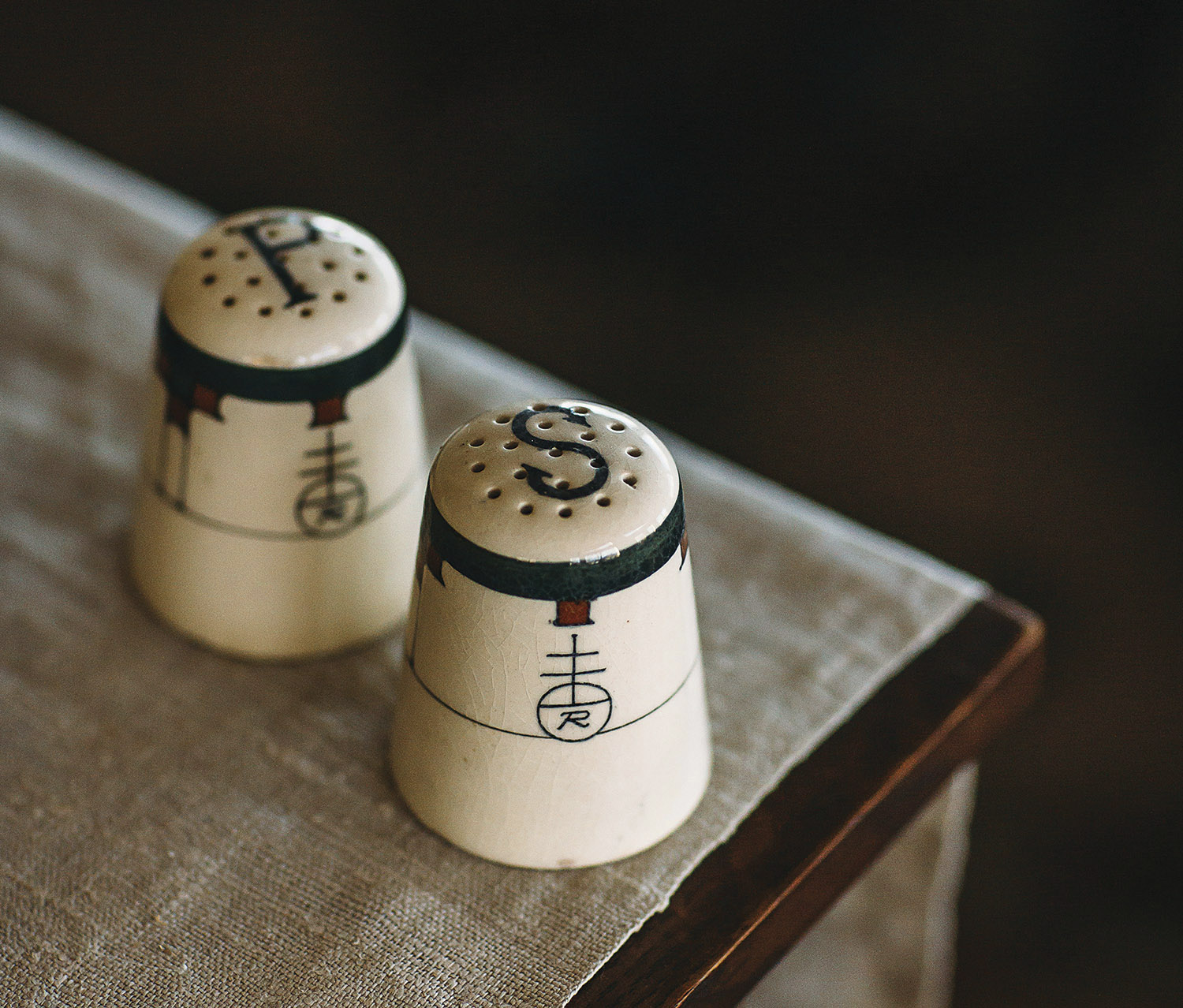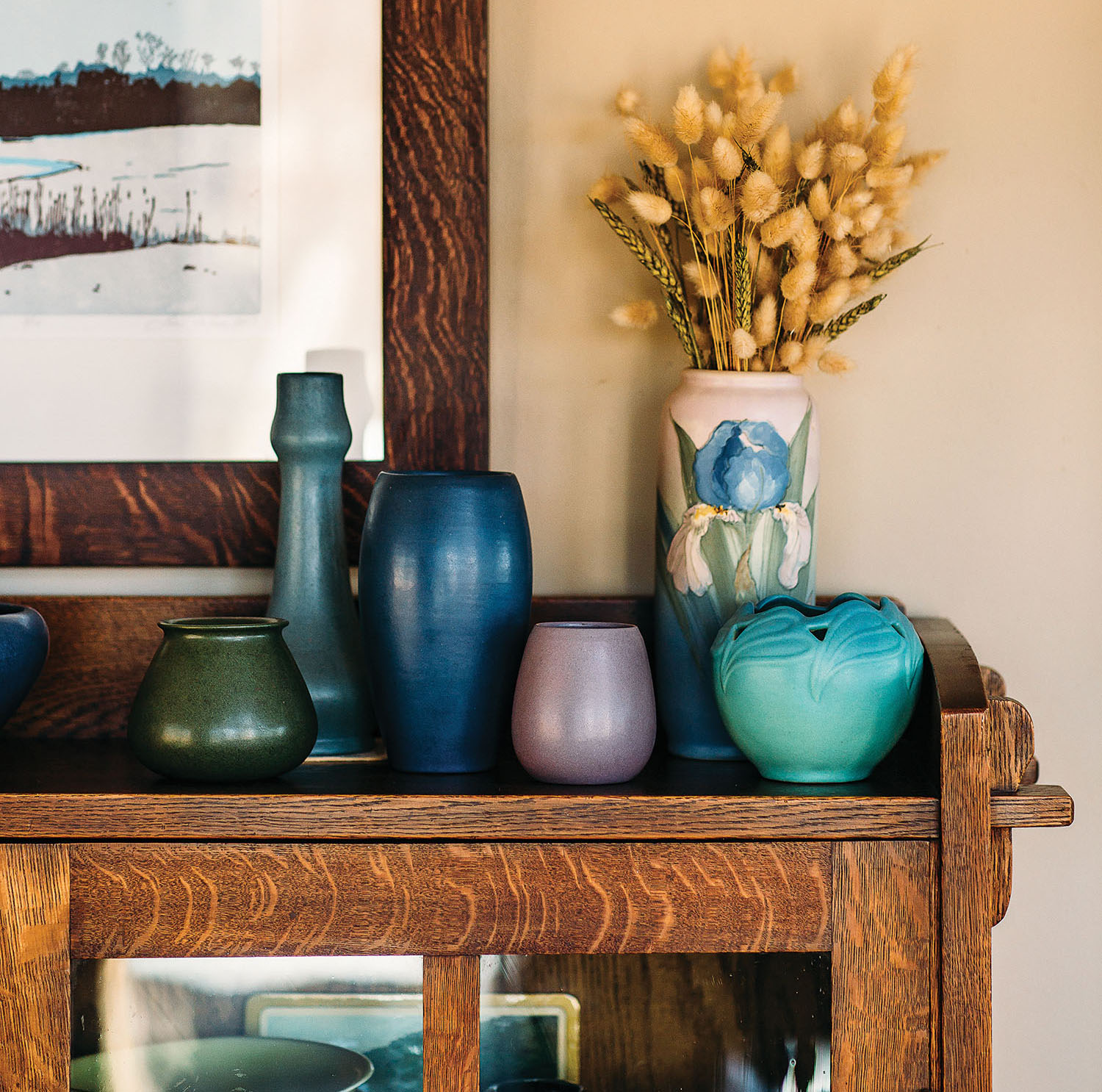
A collector curates, a hoarder merely acquires. There’s a big difference between the two, insists Bruce Johnson. And, he adds, “Arts and Crafts collectors are different still.”
It certainly behooves Johnson to say so: He’s director of the National Arts and Crafts Conference at the Omni Grove Park Inn, an event that turns 30 this year, and a prolific author (From Mountain Crafts to Arts and Crafts is his latest book).
But the proof plays out daily. Unlike collectors who place their valuables on high shelves or guard them behind glass, the typical Arts and Crafts enthusiast doesn’t just collect showpieces. Aficionados harbor zero guilt about actually using what they gather, says Johnson: “We want to sit on our furniture, use our pottery, and hang our art. I like showing a friend a piece of pottery and examining and handling it together, noticing its glaze and shape. Each piece is imbued with its own internal drama and story, and you can’t share those experiences when pieces are too precious.”
The Arts and Crafts aesthetic originated in England around 1895, and was a critical response to the anonymous mechanical push of the Industrial Revolution. As a movement, it “honored the craftsman and placed a high value on solid materials and high quality,” says Johnson. “Luckily, it also developed at the same time as both middle-class home ownership and the popularity of bungalows grew.”

Many Craftsman pieces were made — and they were made well. On top of form and function, then, accessibility makes the genre a collector’s dream.
Manifestations of the movement include Mission furniture, founded in the eponymous district of San Francisco, and Roycroft, a style of architecture, interior appointments, and graphic design born from a crafters’ consortium near Buffalo. Furniture designer Gustav Stickley, also of New York State, was one of the movement’s major players.
Johnson describes the look as being “nestled between the fussiness of the Victorian era and the almost jarring style of Mid Century Modern.” Although 19th-century furniture was ornately detailed, it was often cheaply constructed: instead of being hand-wrought, veneers were glued on and details were stamped in. And the Modern style, its rise concurrent with the golden age of advertising, could be glittery and cold.
Bridging these extremes, Arts and Crafts, as it emerged on both U.S. coasts, was “useful, simple, and beautiful — the whole package,” says Johnson. He refers to it as the first truly American style, the decorative equivalent of jazz. Its popularity has ebbed and flowed over the last decades, but the love for it doesn’t die.
Johnson’s eye for treasure started when he was a paper boy in small-town Indiana, spending his route earnings on rare coins. To this day, he’s kept the collection, with no plans to sell.
“As a young man, I was an antique- and thrift-store junkie, and bought cheap furniture which spanned all styles … I did lots of restoring, repairing, and re-gluing,” he shares. One day, he hit a yard sale and met a set of Stickley chairs face to face, and that was it. “I fell hard,” he declares.
When he moved to Asheville almost 30 years ago, Johnson’s first home was a house built in 1914. But he eventually moved to Fairview with his wife Leigh Ann Hamon, a veterinarian, to be able to raise animals, namely horses, in a country setting. The couple resides with trusty canines Jasper and Daisy in a spacious, serene home that exudes Arts and Crafts-esque warmth and tranquility.

Johnson has collected furniture, textiles, and pottery in the style for decades. Another early acquisition was his father’s office desk; his dad got it in 1948, when Arts and Crafts was considered nothing special. “It’s not a fine piece, but it’s not all about that,” he explains. “I love pieces for their history as much as their pedigree.” His home reflects this approach, outfitted with original casement pieces and decorative accessories comfortably cohabiting with contemporary objects made by artisans who honor the Craftsman style.
Details are everywhere: a graceful pinecone motif adorns a stenciled wall border, and a piece of stained glass in one window — a salvaged element from an early-20th-century piano — throws off colored light. Ceramic vessels parade numerous bands of the rainbow, but the pottery shades are tranquil rather than riotous, courtesy of matte glazes and gentle floral embellishments of iris, dogwood, and daffodil. This refined trait also shows up in table runners, including images of Macintosh roses, leaves, and other bits of fauna.
The furniture’s rich woods complement a palette on the walls that’s likewise inspired by nature — hues of muted brick, smoky green, a true morning-glory blue, and a rich yellow-gold. Johnson doesn’t strive for an interior that’s museum-level thematic, or, as he dubs it, “velvet rope.” To prove it, he keeps a prized Roycroft salt-and-pepper shaker set on his dining table, at the ready for the next meal. “I really wouldn’t want to have it if I couldn’t use and look at it daily,” Johnson says.
He once had a Stickley couch that got too little love. “No one wanted to sit on it — myself included — because it was so uncomfortable,” he recalls. So he bought an Arts and Crafts-inspired contemporary leather sofa instead, one that fulfills its mission: “It lives compatibly and successfully with my original pieces.”
The 30th annual Arts and Crafts Conference happens at the Omni Grove Park Inn February 17-19, featuring lectures, tours, antiques dealers, a gala dinner celebration, and the work of contemporary artisans. For more information, see arts-craftsconference.com.
